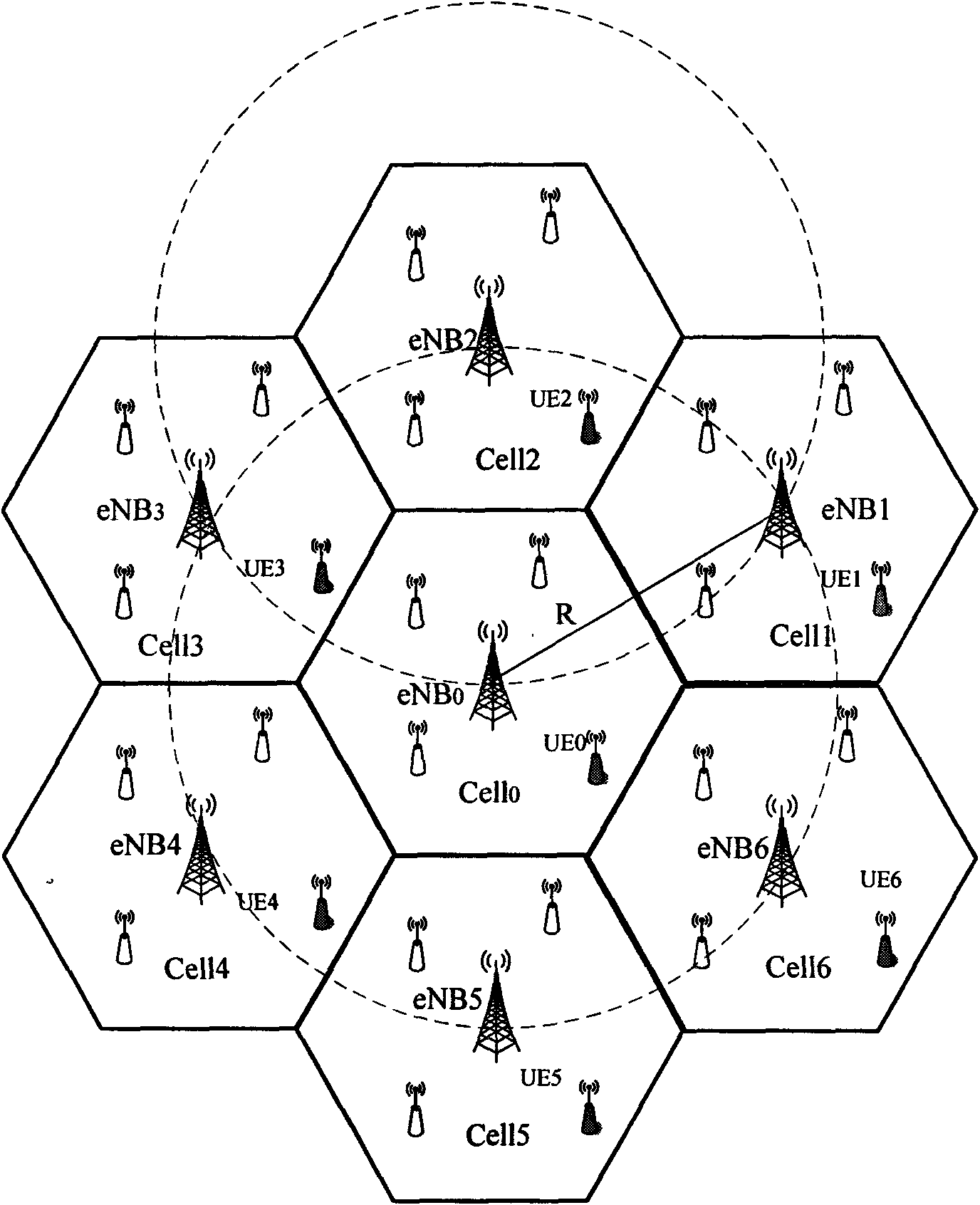Multi-user MIMO test method between base stations
A detection method and technology between base stations, applied in the field of multi-user MIMO detection between base stations, can solve the problems of low accuracy of detection results and inability to reasonably utilize signal information of other users on the same frequency
- Summary
- Abstract
- Description
- Claims
- Application Information
AI Technical Summary
Problems solved by technology
Method used
Image
Examples
Embodiment Construction
[0032] In order to make the purpose, technical means and advantages of the present invention clearer, the present invention will be further described in detail below in conjunction with the accompanying drawings.
[0033] Users occupying the same time-frequency resources are called co-frequency users. Since co-frequency users occupy the same time-frequency resources, they interfere with each other more. For inter-frequency users occupying different time-frequency resources, the mutual interference is small. It can be ignored in the detection and will not affect the signal detection result. Therefore, in the present invention, when performing multi-user MIMO signal detection, mutual interference between users of the same frequency is considered, and the interference between users of the same frequency is utilized to perform joint detection on users of the same frequency.
[0034] Furthermore, multiple users participating in multi-user MIMO may be located in different cells, and t...
PUM
 Login to View More
Login to View More Abstract
Description
Claims
Application Information
 Login to View More
Login to View More - R&D
- Intellectual Property
- Life Sciences
- Materials
- Tech Scout
- Unparalleled Data Quality
- Higher Quality Content
- 60% Fewer Hallucinations
Browse by: Latest US Patents, China's latest patents, Technical Efficacy Thesaurus, Application Domain, Technology Topic, Popular Technical Reports.
© 2025 PatSnap. All rights reserved.Legal|Privacy policy|Modern Slavery Act Transparency Statement|Sitemap|About US| Contact US: help@patsnap.com



